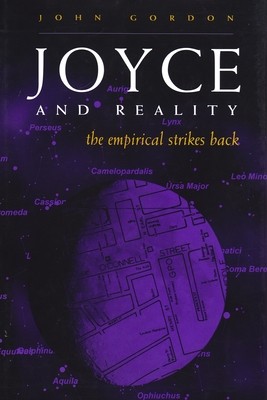
- We will send in 10–14 business days.
- Author: John Gordon
- Publisher: Syracuse University Press
- ISBN-10: 0815630190
- ISBN-13: 9780815630197
- Format: 16.5 x 24.2 x 2.7 cm, kieti viršeliai
- Language: English
- SAVE -10% with code: EXTRA
Reviews
Description
"Joyce was a realist, but his reality was not ours," writes John Gordon in his new book. Here, he maintains that the shifting styles and techniques of Joyce's works is a function of two interacting realities the external reality of a particular time and place and the internal reality of a character's mental state. In making this case Gordon offers up a number of new readings: how Stephen Dedalus conceives and composes his villanelle; why the Dubliners story about Little Chandler is titled "A Little Cloud"; why Gerty MacDowell suddenly appears and disappears; what is happening when Leopold Bloom stares for two minutes on end at a beer bottle's label; why the triangle etched at the center of Finnegans Wake doubles itself and grows a pair of circles; why the next to last chapter of Ulysses has, by far, the book's highest incidence of the letter C; and who is the man in the macintosh.
Gordon, whose authoritative "Finnegans Wake" A Plot Summary received critical acclaim and is considered one of the standard references, revisesand challengesthe received version of that reality. For instance, Joyce features ghost visitations, telepathy, and other paranormal phenomena not as "flights into fantasy" but because he believed in the real possibility of such occurrences.EXTRA 10 % discount with code: EXTRA
The promotion ends in 23d.11:57:35
The discount code is valid when purchasing from 10 €. Discounts do not stack.
- Author: John Gordon
- Publisher: Syracuse University Press
- ISBN-10: 0815630190
- ISBN-13: 9780815630197
- Format: 16.5 x 24.2 x 2.7 cm, kieti viršeliai
- Language: English English
"Joyce was a realist, but his reality was not ours," writes John Gordon in his new book. Here, he maintains that the shifting styles and techniques of Joyce's works is a function of two interacting realities the external reality of a particular time and place and the internal reality of a character's mental state. In making this case Gordon offers up a number of new readings: how Stephen Dedalus conceives and composes his villanelle; why the Dubliners story about Little Chandler is titled "A Little Cloud"; why Gerty MacDowell suddenly appears and disappears; what is happening when Leopold Bloom stares for two minutes on end at a beer bottle's label; why the triangle etched at the center of Finnegans Wake doubles itself and grows a pair of circles; why the next to last chapter of Ulysses has, by far, the book's highest incidence of the letter C; and who is the man in the macintosh.
Gordon, whose authoritative "Finnegans Wake" A Plot Summary received critical acclaim and is considered one of the standard references, revisesand challengesthe received version of that reality. For instance, Joyce features ghost visitations, telepathy, and other paranormal phenomena not as "flights into fantasy" but because he believed in the real possibility of such occurrences.

Reviews